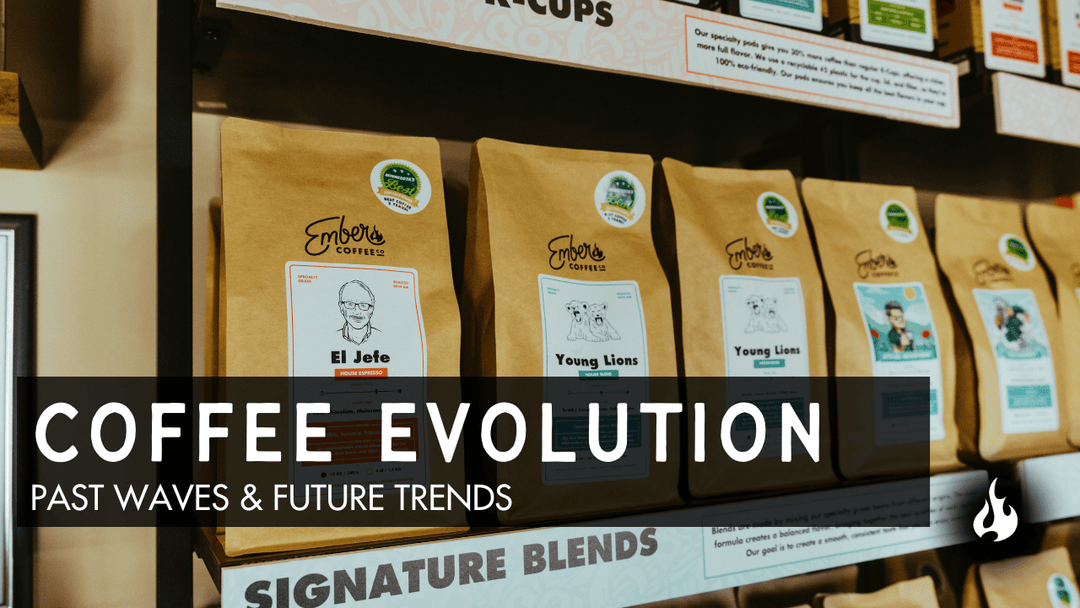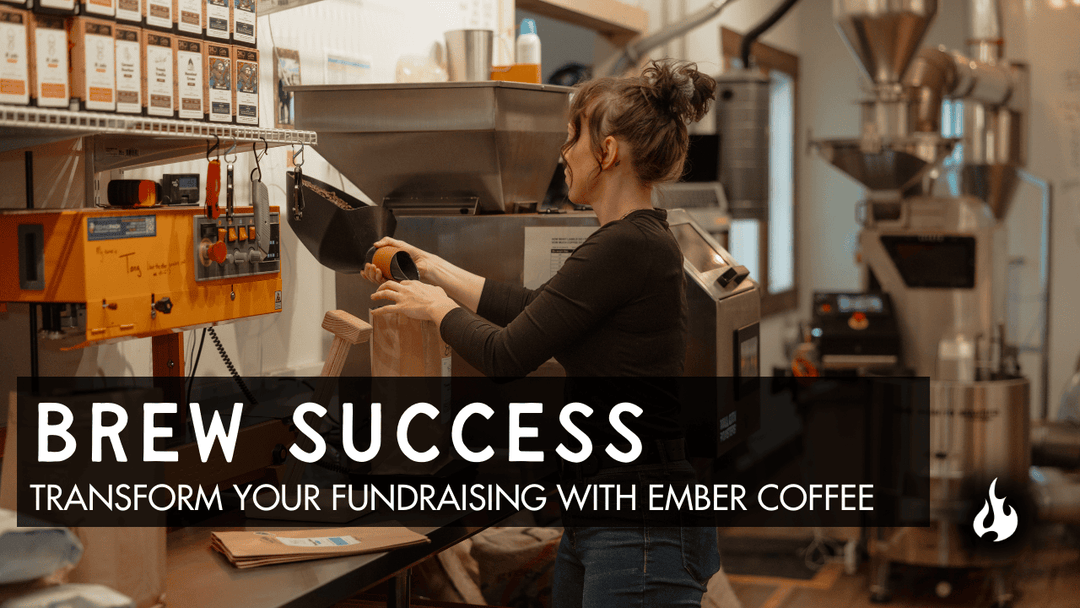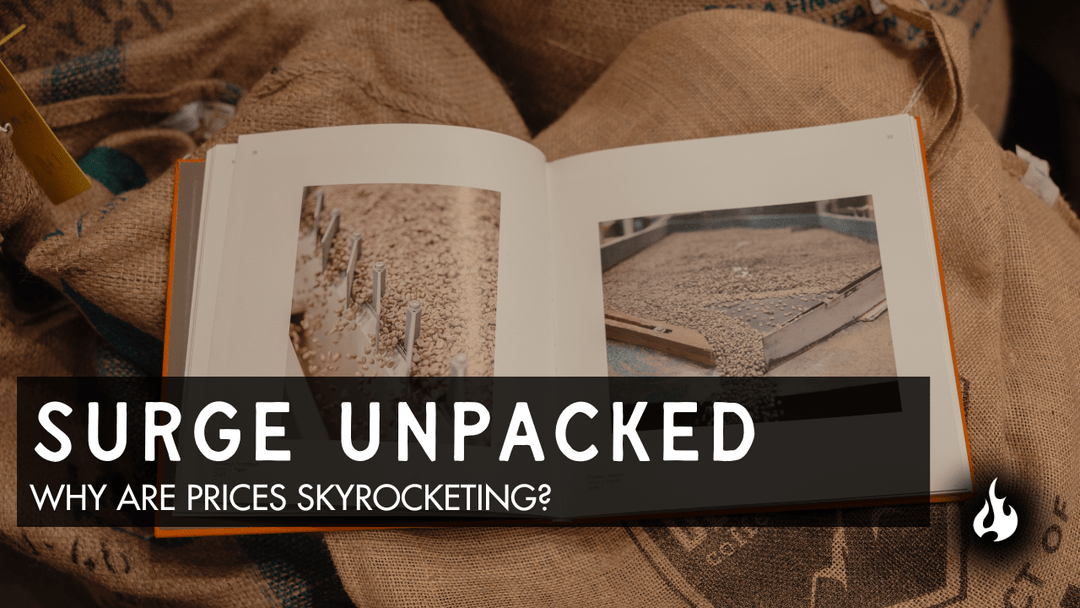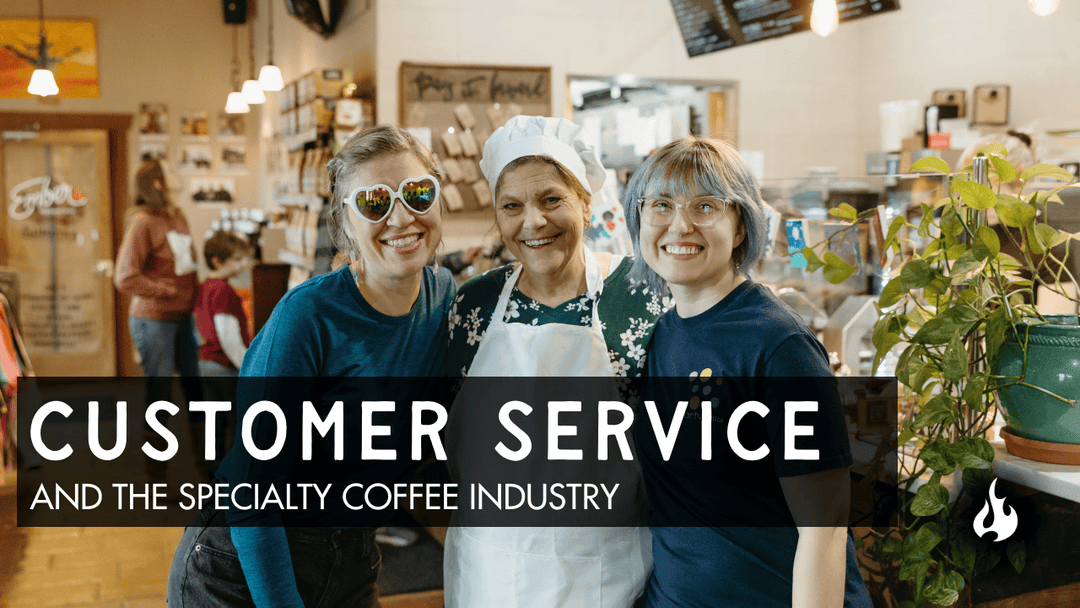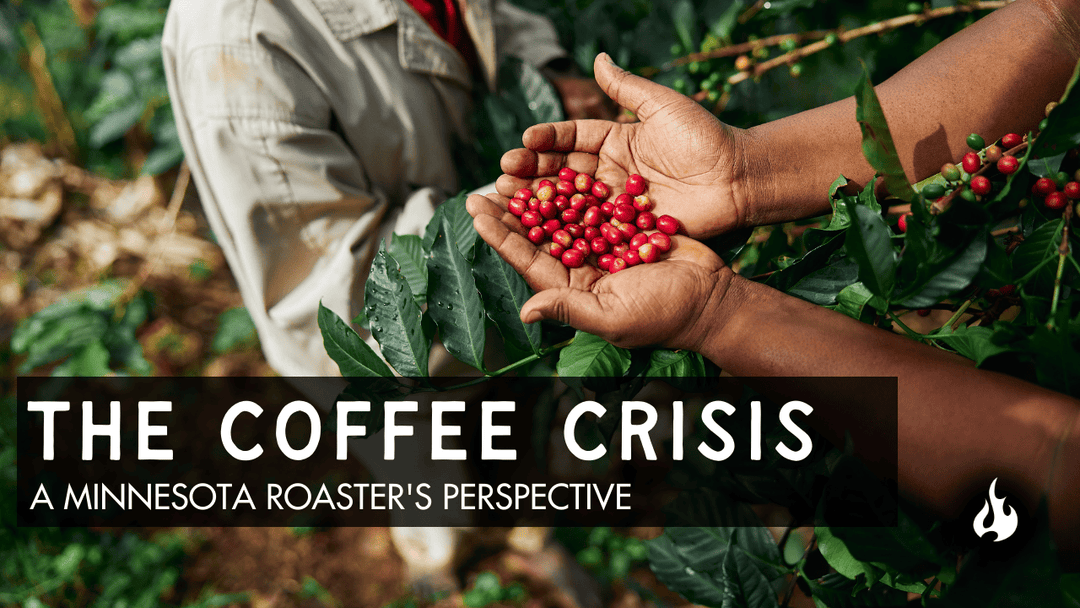Coffee Evolution: Past Waves & Future Trends
The concept of "waves" in coffee has served as a vital framework for understanding the evolution of the coffee industry. Each wave represents a pivotal transition in how coffee is produced, perceived, and consumed. Originally coined by Trish Rothgeb in 2002, these waves have helped coffee enthusiasts, producers, and professionals contextualize the dynamic shifts within this beloved industry.
Coffee Evolution: Past Waves & Future Trends
The concept of "waves" in coffee has served as a vital framework for understanding the evolution of the coffee industry. Each wave represents a pivotal transition in how coffee is produced, perceived, and consumed. Originally coined by Trish Rothgeb in 2002, these waves have helped coffee enthusiasts, producers, and professionals contextualize the dynamic shifts within this beloved industry.

The concept of "waves" in coffee has served as a vital framework for understanding the evolution of the coffee industry. Each wave represents a pivotal transition in how coffee is produced, perceived, and consumed. Originally coined by Trish Rothgeb in 2002, these waves have helped coffee enthusiasts, producers, and professionals contextualize the dynamic shifts within this beloved industry.
But as we enter an era of blurred boundaries between waves, some argue the framework may no longer be relevant. Are these "waves" nostalgic relics of coffee culture, or do they still hold the power to inspire and guide us? Join us as we explore coffee’s rich history, its transformations, and where this delicious bean might take us next.
The Power of Categorization in Coffee
Why Are "Waves" Important to Coffee's History?
Coffee waves provide historical context, helping enthusiasts and industry professionals alike connect shifts in coffee culture to broader social, technological, and economic changes. Each wave highlights how coffee transitioned from necessity to culture, to craft, and beyond.
Trish Rothgeb’s classification wasn’t merely a timeline. It was a call to reflect on the state of coffee and where it could go. By understanding the waves, we gain insight into how the industry has shaped the experiences of coffee lovers throughout history.
Coffee's Transformations: From Commodity to Craft
First Wave Coffee: Democratizing the Bean
The first wave of coffee began in the early 1800s when coffee became widely available to households. With the rise of brands like Folgers and Maxwell House, coffee was marketed for its convenience and affordability, not its quality. Instant coffee and pre-ground blends dominated store shelves, cementing coffee as a morning staple.
This wave was the foundation of coffee culture, making the beverage accessible to millions. However, taste and quality took a back seat, as the focus was primarily on caffeine delivery.
Second Wave Coffee: Coffee Culture Takes Root
The second wave of coffee, which emerged in the 1970s, elevated coffee from a commodity to an experience. Coffeehouse chains like Starbucks and Peet's introduced consumers to espresso drinks, “fresh” roasts closer to their roasting date, and the idea of coffee as a social experience.
During this phase, brewing became more than functional. Cafés became community hubs, and coffee was tied to identity and lifestyle. While quality received attention, the second wave primarily focused on creating an accessible, inviting atmosphere.
Third Wave Coffee: The Craft Movement
The third wave, heralded in the early 2000s, regarded coffee as an artisanal product. Enthusiasts compared it to fine wine or craft beer, emphasizing the art and science of coffee production. This era drew attention to the bean's origin, processing methods, and the growers behind the cup.
Specialty coffee roasters, including many Minnesota coffee roasters like Ember Coffee in Big Lake, became central to this era. They embraced innovations like lighter roasts that brought out unique flavor notes and fostered direct trade relationships with farmers. A coffee from Ethiopia, for example, was no longer simply a “bean”—it was a story of soil, altitude, and craftsmanship. Transparency, sustainability, and roasting expertise defined the third wave.
For modern coffee lovers, the third wave is still alive in spaces that champion single-origin, ethically sourced coffee in Minnesota and beyond.
The Contested Fourth and Fifth Waves of Coffee
Fourth Wave Coffee: Science vs. Scalability
Defining the fourth wave of coffee is tricky because its identity depends on perspective. Some argue that fourth wave coffee emphasizes precision and science, relying on technological breakthroughs to create the perfect cup. Precision tools, water chemistry, and frozen beans are hallmarks of this shift.
Others suggest that scalability is the defining characteristic. The fourth wave makes specialty coffee more accessible to mainstream audiences, blending craft with commerce and broadening the reach of high-quality coffee to less mature markets. For example, Minnesota-based operations tapping into specialty coffee trends have shown it is possible to scale without sacrificing quality.
Fifth Wave Coffee: Craft Meets Big Business
The fifth wave is the most debated of all. Often described as "scaled boutique hospitality," it seeks to deliver a hospitality-driven, artisanal experience on a large scale. This means quality, customer service, and business priorities blend seamlessly to offer both craft and convenience.
However, some critics believe the fifth wave is more marketing than substance. They argue it simply packages fourth-wave values with a sharper emphasis on profit and scalability (debate source).
Commentators Are Split: Are Coffee Waves Still Needed?
The Case for Coffee Waves
While critics argue that waves oversimplify the complexity of a global industry, the framework serves an important purpose. For coffee brands—including award-winning coffee roasters or regional hubs like Central Minnesota roasters—the historical lens of waves helps position businesses and educate consumers about the evolution of coffee.
Understanding waves can demystify specialty coffee for those just entering the world of craft coffee. Whether you buy coffee at Starbucks or from a local Minnesota roaster like Ember Coffee, the waves provide an easy way to understand where your favorite brew fits into coffee's history.
The Case Against Coffee Waves
On a global scale, the waves can feel reductive. Coffee trends in Big Lake, Minnesota, might focus on accessible specialty roasts, while emerging markets like Eastern Europe or India may still be in their second wave. The framework doesn’t easily accommodate regional differences.
Critics also argue that waves neglect producers, the people growing and harvesting coffee beans. While consumers enjoy innovation, producers face challenging questions about climate change, sustainability, and fair pricing that don’t easily align with the wave framework.
Beyond Waves: Coffee’s New Frontiers
The future of coffee may not lie in waves but in emerging trends that transcend past classifications. Here are three dynamic shifts shaping what's next:
1. Producer-Centric Coffee
A growing emphasis on the well-being of coffee producers is reshaping supply chains. Fair trade and direct trade models are evolving to provide long-term support for farmers while ensuring ethically sourced coffee continues to delight consumers.
2. Sustainability as a North Star
From compostable packaging to carbon-neutral coffee farms, sustainability is becoming central to the industry. Consumers are increasingly choosing brands, like certain Minnesota roasters, that are committed to environmentally friendly practices.
3. Technology Transforming Coffee Experiences
Whether through precision grinders, AI-driven roasting, or app-based brewing methods, technology continues to revolutionize how we engage with coffee. The right innovations blend progress with accessibility, satisfying veteran enthusiasts and newcomers alike.
What the Future Holds for Coffee Enthusiasts
Understanding waves can still be helpful, but coffee’s future may lie in blended approaches. Whether you brew your daily cup at home or visit a Minnesota coffee roaster, one truth persists: coffee has endless depth for exploration.
Want to learn more about what makes great coffee? Visit your local specialty coffee shop, or explore curated blends through trusted names in ethical coffee, like award-winning Minnesota coffee brands that emphasize craft, quality, and community.


